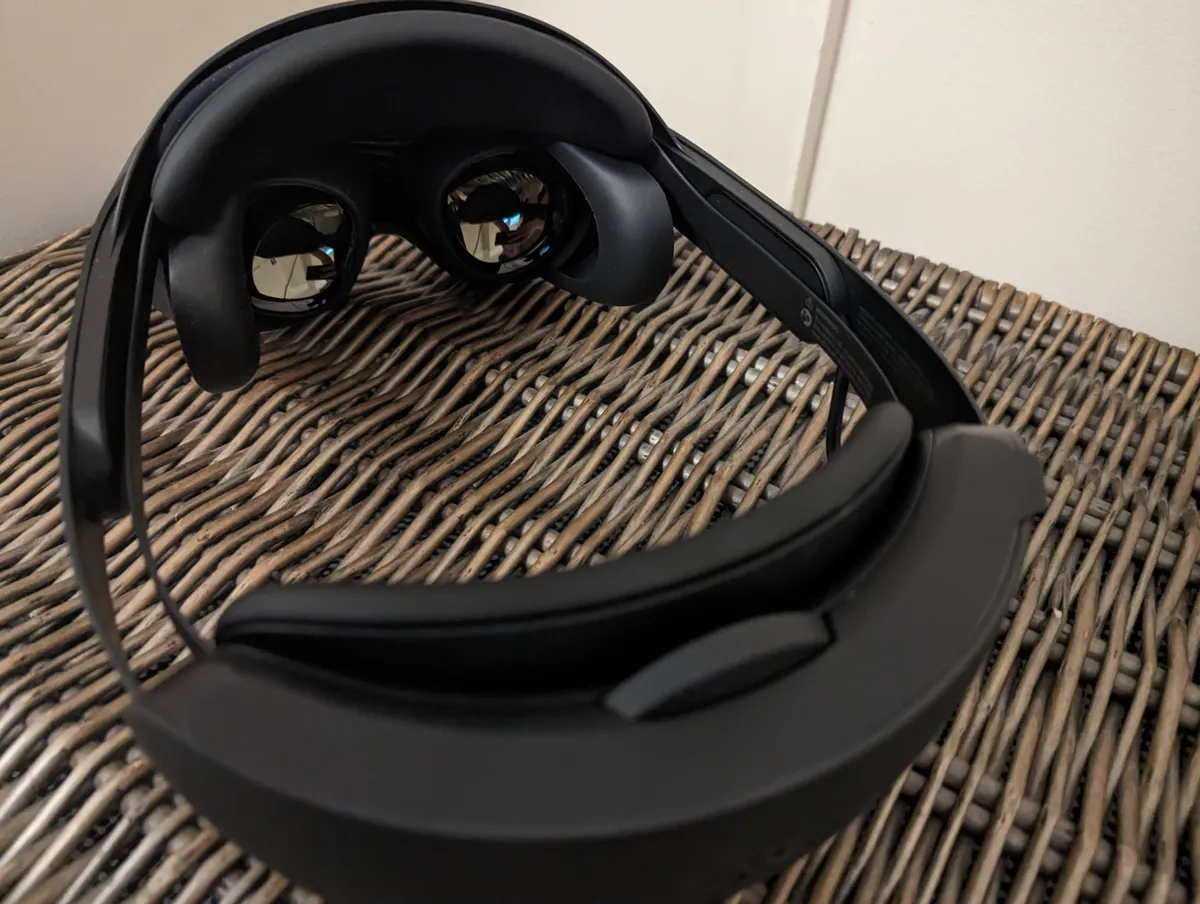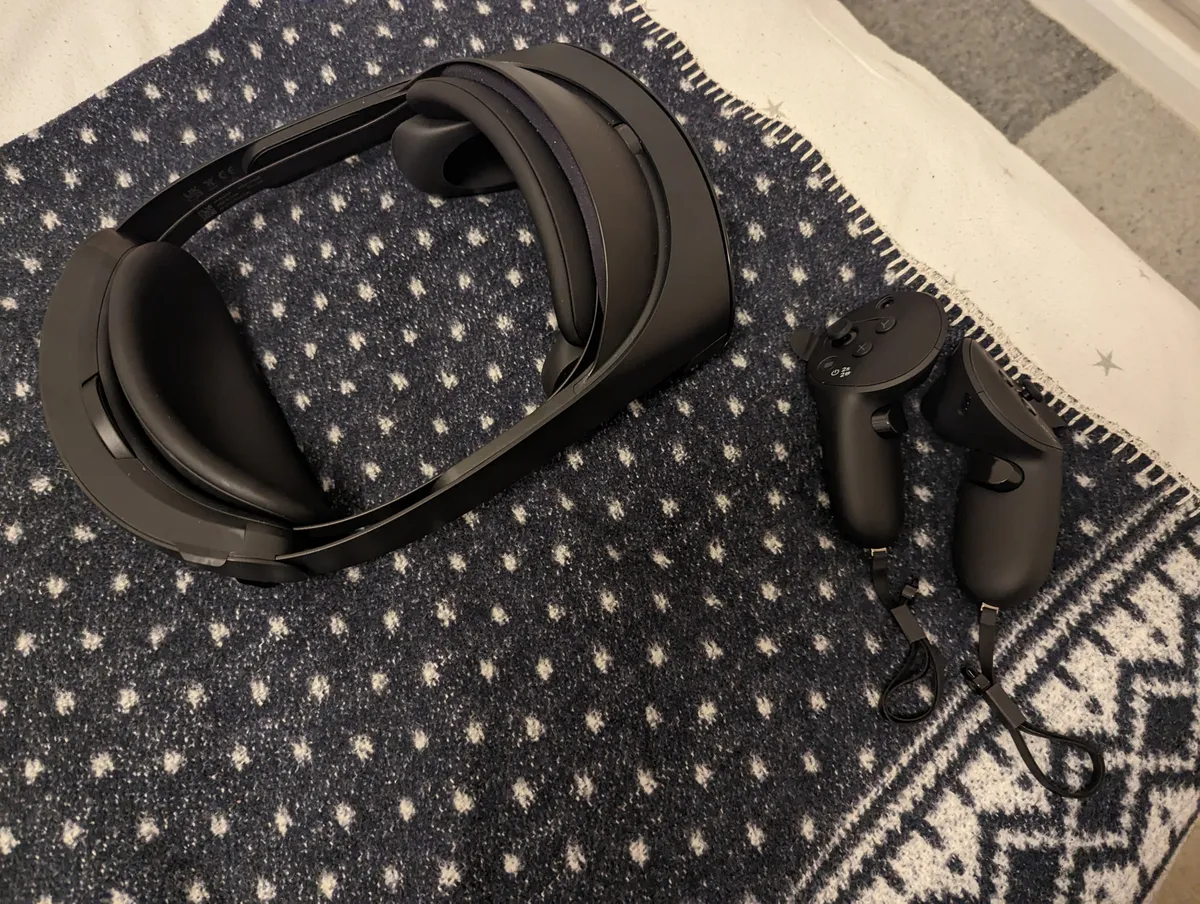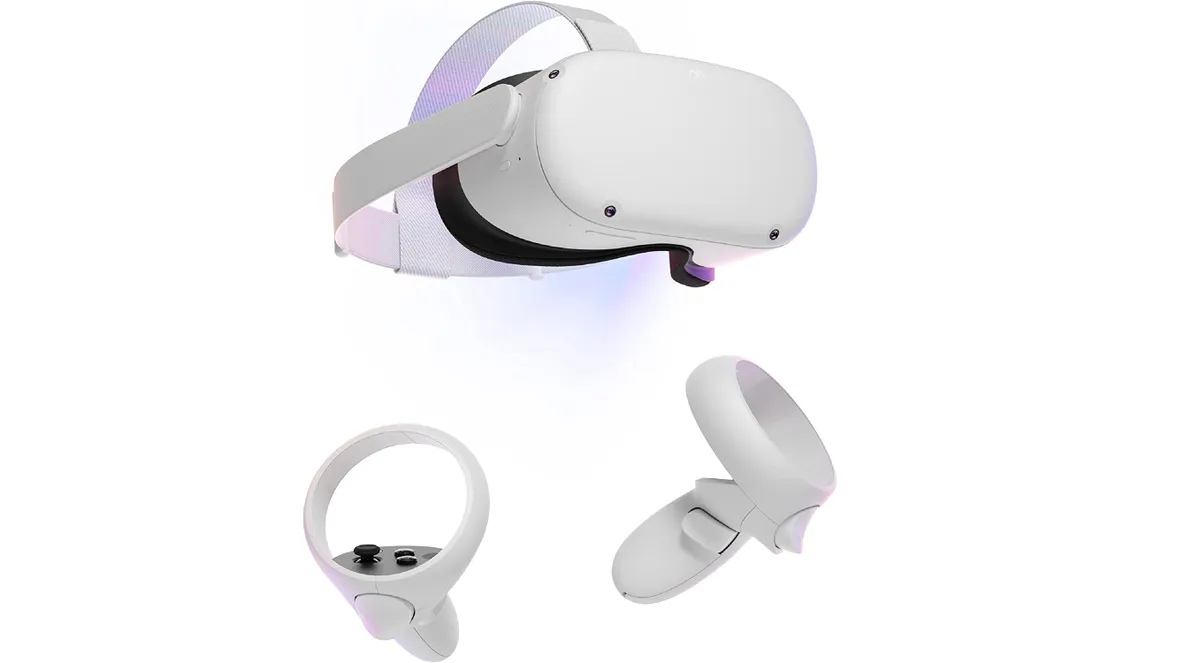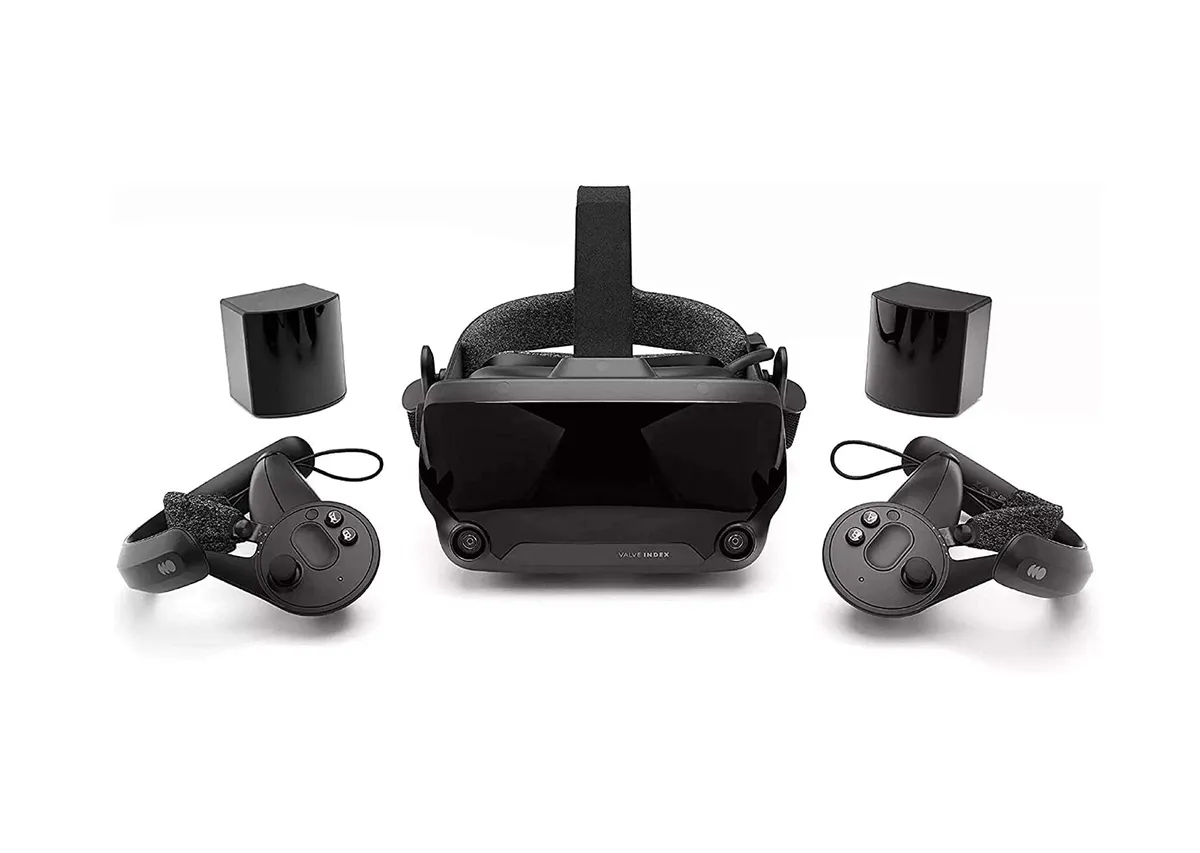It’s fair to say that the metaverse hasn’t been the resounding success that Zuckerburg and his team had hoped for so far. At a time when most people are trying to save money, a VR headset and a patch of virtual land fall low on the priority list of the general public.
With this in mind, Meta’s new Quest Pro headset is aimed at a slightly different audience. It’s packed with a host of new features, higher specs and a sleek new look. But unsurprisingly, these changes also mean a much bigger price, asking people to cough up £1499.99.
Where the cheaper Meta Quest 2 was the fun uncle for playing games with or learning a virtual reality sport, the Meta Quest Pro is all business. It is aimed at creatives, educators and office workers looking to level up their art or take their meetings to a new level.
So is the Meta Quest Pro the future of the office? Or even the ultimate tool for creatives to enhance their art? We spent some time with the Meta Quest Pro to see if this VR headset can justify its lofty price.
Living in a blended world
The Meta Quest Pro has the aesthetic of something that will be stylish, futuristic, and incredibly uncomfortable – it lives up to all of these factors. For short periods of time, it can be as comfortable as a chunky VR headset can be… for longer periods, the weight is very noticeable.
The headset is pulled over your head, held in place with a clamp feature that can tighten to fit your head shape. To balance out the weight of the lenses and cameras at the front, Meta has placed the battery in the back.
While the weight is balanced out, it doesn’t fix the headset's comfort. The weight would quickly become noticeable; the headset would also apply pressure to my forehead, even leaving a mark after long periods of usage.
It comes with a simple charging dock, allowing you to boost the battery of the headset and controllers all in one go. Once it was turned on, set-up took a matter of minutes, most of which was spent choosing my preferences and, as usual, offering up a wealth of personal data.
Even with all of the adjustments made, this headset lacks full immersion. You can very clearly see out of the bottom, even when you clip on the included eye covers. When I was deep into a game or experience, it wasn’t too bad, but it was very clearly noticeable at other times.
A setting that I loved when setting up (and later using) the headset was the ability to set a walking parameter. Using the controller, I was able to trace out the area I could move, making a box that would save me from head-butting my bookshelf or kneeing my dining table.
If you leave this box, exterior cameras on the headset will show you your surroundings through the headsets mixed reality features. This is a feature that proves useful in a host of games or applications, blending the virtual and real worlds.
Specs and features

The specs that the Meta Quest Pro offers are impressive, as they should be at this price point. The system utilises the Snapdragon XR2+ processor. Meta claims this is 50 per cent more powerful than the processor used in the Meta Quest 2 – an already powerful headset.
The Pro features 256GB of storage for all of the games, software and apps you’ll be stacking up.
The important specs are within the two displays – one for each eye. They offer a 1920 by 1800 resolution, making use of a local dimming backlight system to improve the contrast. Both screens also offer a 90Hz refresh rate, reducing issues of motion sickness.
Battery life is pretty poor, with Meta quoting ‘up to 2 hours’ – less than what the lighter, more affordable Quest 2 offers. That means if you are planning on using this for work or creative output, you’ll be having to take several charging breaks throughout the day.
Starting a new life in the virtual world

All set to begin my Ready Player One fantasies; I started off in Meta’s Horizon Worlds – a multi-player virtual platform and Meta’s best attempt at a metaverse experience so far.
The concept for Horizon Worlds all makes sense. In a nutshell, it is a social gaming platform like we’ve seen countless times, think Habbo Hotel or Second Life, but to a much higher level, pumped up with voice chat and virtual reality functions.
While the concept is great in retrospect, it isn’t without its flaws. It can be glitchy and quite frankly, confusing. Navigating around these worlds takes a lot of time to get your head around, even with the lengthy tutorials to start.
One feature that makes the Meta Quest Pro stand out here is its facial captures feature. Interior cameras in the headset can monitor both your eyes and mouth, replicating your expressions in the metaverse.
This, in theory, means when you smile, your avatar does the same. In reality, I looked asleep most of the time and my laughing came out more like a demented villain laughing as he takes over the world in the game.
While this wasn’t always accurate for me, this could be due to an incorrect fit on my face. Like most other parts of the Meta Quest Pro, this feels like technology that will be useful in the future… but not quite right now.
A big feature Meta is excited about with this device is its virtual offices. Unfortunately, this often felt like doing my job at a lower capacity with extra steps. Virtual reality meetings within ‘Horizon Workrooms’ took forever to setup and organise and felt like a more disorientating version of a Teams or Zoom meeting.
It is a cool idea, and with future updates and following headsets, could be something I see myself trying again. Can I see businesses actually hosting meetings in this digital space though? No, not really.

One part of Horizon Workrooms that performed better for me was the ability to set up a desk to work at. You sit down (at a real-life desk) and using the controllers, draw out the desk in front of you, creating a replica space in the metaverse.
Once you’ve done this, you can connect your computer. This will create a system where within the VR headset you have multiple displays, a nice office and a fancy-looking desk, while you type on your real-life keyboard and mouse.
This worked better than the Horizon meeting function, but once again, I couldn’t really understand the point. It wasn’t more comfortable to work like this, it was pretty disorientating, and considering the battery life, working a 9-5 like this would involve a lot of breaks.
Getting creative
While this is billed as a headset for work and creative output, you can still game using the Meta Quest Pro. Unsurprisingly, this offers as good, if not better, performance than other devices like the Meta Quest 2.
Equally, I spent some time with the Meta Quest Pro painting, exercising and even making some music. Throughout all of it, I couldn’t quite help but shake the feeling… this feels more complicated with VR.
Verdict
There is no doubting that the Meta Quest Pro is easily one of the most powerful VR headsets out there… but at £1499.99, of course it would be. The question I can’t understand is who this headset is actually for?
Few offices are likely to cough up the cost for a host of these – this level of investment is a lot for even the wealthiest of creatives for digital art or VR music creation. And let’s be honest, the education system isn’t exactly itching to spend this kind of money.
The Meta Quest Pro seems to cater to a market that doesn’t fully exist yet. In the future, maybe we really all will be living it up in the metaverse; learning, creating and meeting. For now, this feels like a headset made purely for the metaverse and virtual reality fanatics willing to splash the cash.
So should you buy the Meta Quest Pro? Despite some key issues with battery life, fit and some occasional glitchy features, this is without a doubt one of the best headsets you can buy. If you understandably can’t justify the price and aren’t looking to get every single drop of VR power, go for the much better value Meta Quest 2.
Alternatives
Meta Quest 2

The cheaper alternative from Meta, the Quest 2 will be much better suited to casual users, looking to play games or try out some of the features on offer from VR. While it has a weaker processor and doesn't offer the same tracking functions as the Pro, the Quest 2 is lighter, and has a longer-lasting battery.
- Buy now from Amazon (£399), John Lewis (£399), Argos (£399)
HTC Vive Flow

The HTC Vive Flow is an interesting offer in the world of VR. When we reviewed it before, we were impressed by its portability and affordability. However, this is designed for the absolute most casual VR users. It doesn't offer the highest specs and the visuals can be lower resolution than its competitors.
- Buy now from HTC (£499)
Valve Index

HTC's Valve Index is no joke. It is huge, not the most portable headset and realistically pretty pricey. However, in exchange for those problems, you are offered one of the most realistic VR experiences on the market.
This is very much a headset built for VR fanatics looking for the full package.
